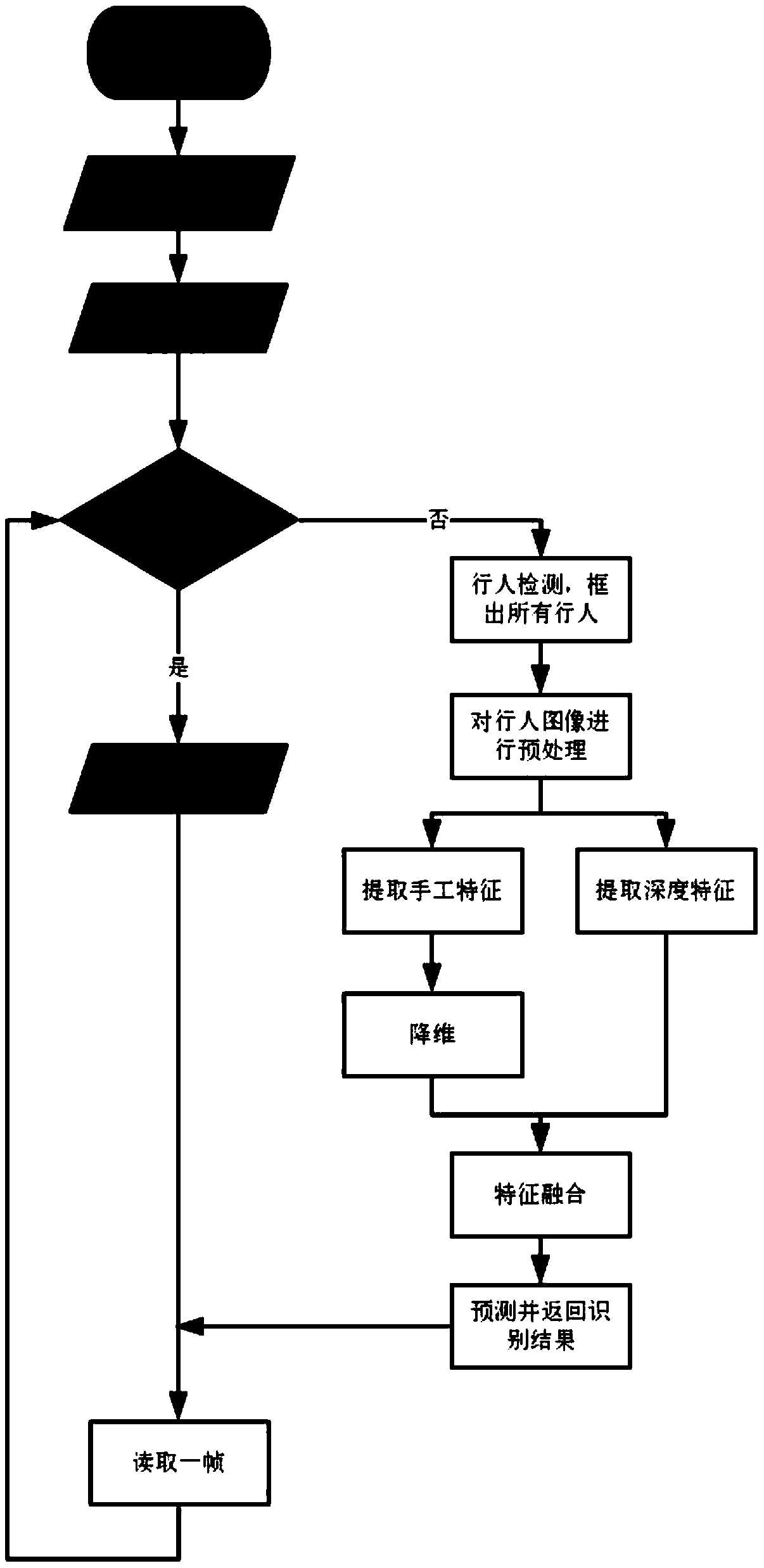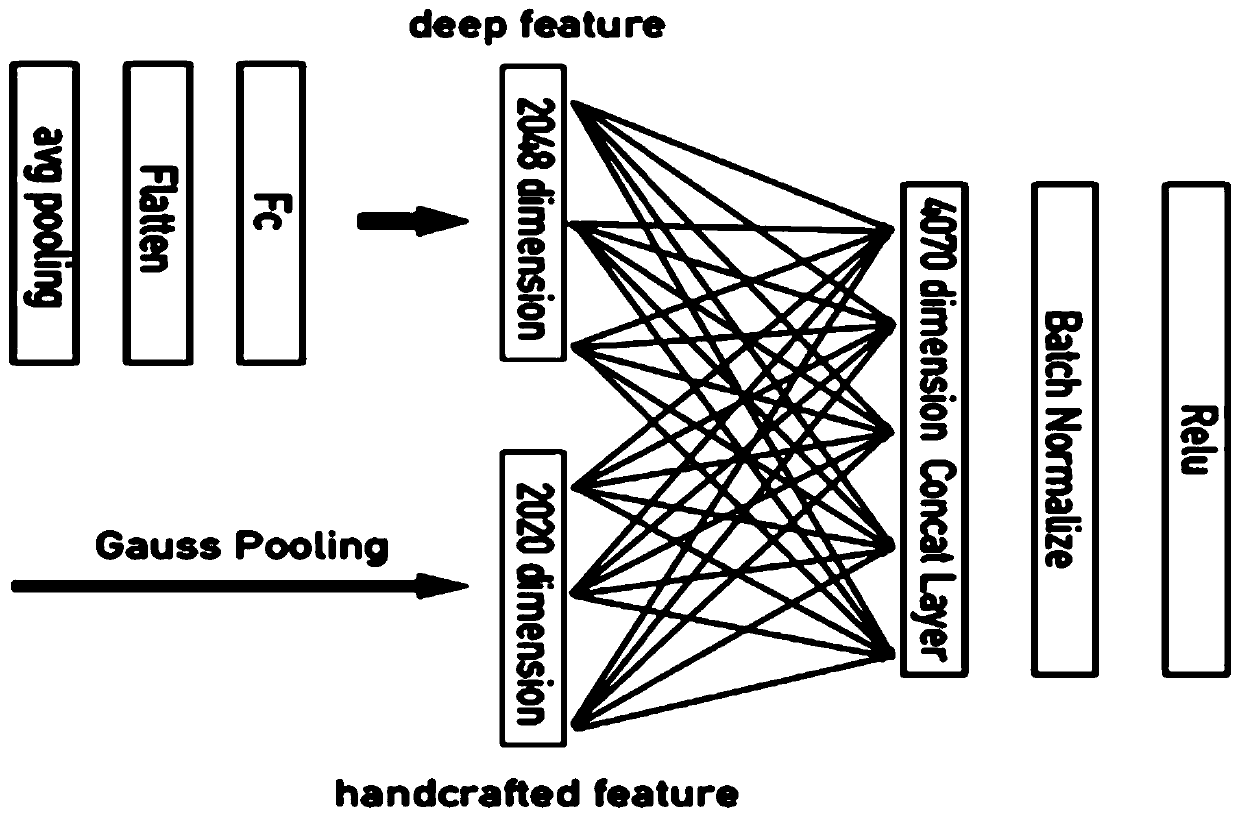Intelligent monitoring method based on deep fusion neural network pedestrian re-identification technology
A pedestrian re-identification and neural network technology, applied in the field of intelligent monitoring, can solve the problems of difficult to guarantee the convergence speed, weak coupling between manual features and deep features, and difficult to train neural networks. effect of speed
- Summary
- Abstract
- Description
- Claims
- Application Information
AI Technical Summary
Problems solved by technology
Method used
Image
Examples
Embodiment 1
[0073] S3B. For an original image with a size of 128*64, DFNN first cuts it out randomly, then rescales it to 256*128 and passes it into the deep neural network ResNet50. The input image is sequentially processed through convolution layer, local normalization layer, modified linear activation function, maximum pooling, etc., and then enters 16 convolution modules. Although the features extracted by these convolution modules are becoming more and more complex, DFFN will maintain and reduce the size of the features at the same time, and the convolution module (convblock) is used to reduce the dimension of the data. There are three other dimensionality reduction modules that are the same as this dimensionality reduction module. After each dimensionality reduction module, the image size will be reduced by 2*2. Therefore, before the input and output are connected through the adder, the input needs to be reduced in size using a convolutional layer to ensure normal addition.
[0074...
PUM
 Login to View More
Login to View More Abstract
Description
Claims
Application Information
 Login to View More
Login to View More - R&D
- Intellectual Property
- Life Sciences
- Materials
- Tech Scout
- Unparalleled Data Quality
- Higher Quality Content
- 60% Fewer Hallucinations
Browse by: Latest US Patents, China's latest patents, Technical Efficacy Thesaurus, Application Domain, Technology Topic, Popular Technical Reports.
© 2025 PatSnap. All rights reserved.Legal|Privacy policy|Modern Slavery Act Transparency Statement|Sitemap|About US| Contact US: help@patsnap.com



